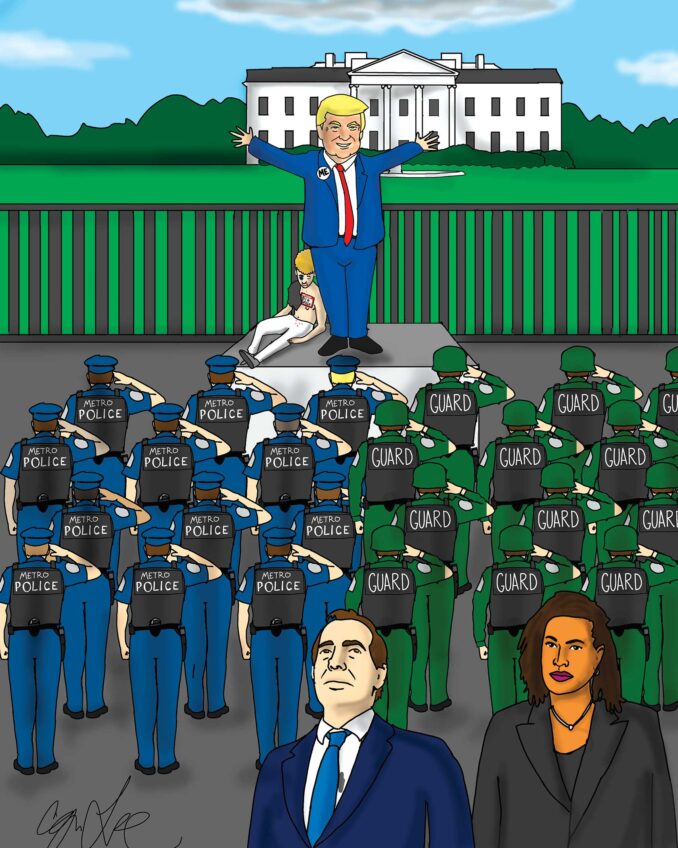
On Sept. 12, 1974, Boston Public Schools students faced an uphill battle. After years of protests and lawsuits, Judge William Arthur Garrity had found that the schools in Boston were unconstitutionally segregated. His ruling would have many repercussions throughout the city.
In 1964, a task force assembled by the Massachusetts Department of Elementary and Secondary Education had found that more than half of the Black students attending the city’s public schools matriculated at institutions that were at least 80% Black, and that housing segregation in Boston clearly caused the racial imbalance. This was brought to light in a finding that showed the Boston Housing Authority had been complicit in this venture since the 1940s. They did this despite racial discrimination legislation in 1950 as well as an executive order signed by President John F. Kennedy that prohibited racial discrimination in federally-funded subsidized housing in the U.S.
In response to the Massachusetts Legislature’s enactment of the 1965 Racial Imbalance Act, which ordered the state’s public schools to desegregate, the judge’s decision set off a wave of racial antagonism that changed the view of Boston from a welcoming place to live and work to one of prejudice and racial intolerance.
Boston became the northern version of the segregated South -— and was commonly known as “Up South” in the Black community — a tinderbox for grievance and violence. Ask any Bostonian who was of school age then what it was like to attend a Boston public school and you will get a plethora of cynical responses that show the problematic times that children had to face due to the onerous actions of a few adults.
Though racial segregation was not the rule of law in Boston, as it was in many Southern states, it was an unofficial policy in the Hub, one reinforced by the Boston School Committee’s refusal to acknowledge segregation in the schools and the effects of residential segregation. City Council members Louise Day Hicks and Joseph Lee were staunchly against any type of remedy for communities of color, despite the fact that schools in Black neighborhoods had a lack of adequate funding and staff and were under-equipped compared to schools in white communities. Ironically, Hicks, who was derisively called the “Bull Connor of the North,” along with other committee members, proposed busing students to other schools in white areas to ease overcrowding; nothing was done in the Black parts of town.
The tactic that Black parents used to alter the political landscape was to run for School Committee seats. One of those candidates was community activist and future mayoral candidate Mel King, who ran for a seat many times without winning, but ultimately was elected to the Massachusetts House of Representatives. Another stalwart in the fight against segregation was Ruth Batson, former Chairwoman of the NAACP’s New England Chapter and also the first woman to serve in that role. Batson was also the Chairwoman of the Massachusetts Commission Against Discrimination (MCAD) and helped start the Metropolitan Council for Educational Opportunity, known as METCO. She argued that the school committee and school administrators were ignoring “a basic American concept that equal opportunity should be available to all people regardless of race, color or creed.” She, too, ran for School Committee preceding Mel King and lost, but the fight was far from over. It was obvious that the Boston School committee had no intention of addressing the inherent problems that they created, despite many protests, walkouts or meetings with representatives from the Black community. So the fight was taken to Beacon Hill and the Legislature. In 1965, the Racial Imbalance Act outlawed segregation in public schools, outlining that schools with student bodies of more than 50% percent of a certain racial group were segregated. Forty-four Boston schools fell into this category, but School Committee members did not budge to change the makeup of these local schools.
METCO was started to bus minority children to suburban schools for a chance at a better education. But the problem still existed within Boston, and the number of students METCO could serve was a small percentage of the overall black student population. Black parents sued and won in the 1972 landmark lawsuit, Morgan v. Hennigan. Parent Tallulah Morgan worked with the NAACP in conjunction with 14 other parents of Black students in Boston to file a lawsuit against the Boston School Committee president, James Hennigan and other members for failing to comply with the Racial Imbalance Act. The lawsuit focused on several areas, including student assignments, redlining, student grading, transportation and school capacity. Judge Garrity ruled in favor of the plaintiffs in 1974, stating that “the Boston School Committee had in effect denied black school children equal protection under the law.” Further, the judge pointed out that the way teachers were hired and promoted in Boston all contributed to a lower quality of education for Black students.
Judge Garrity implemented the changes through school busing, sending white students to Black schools in Roxbury and Dorchester, while sending Black students to schools in South Boston and Charlestown. This ignited protests and riots across the city with schoolchildren in the crosshairs of the violence. Forty riots were documented that year as the city became a cauldron of cruelty as buses carrying students were attacked, and the violence also affected many others throughout the city.
Years later, the judge ironically transferred oversight and control of the program to the Boston School Committee. The committee voted to end race as a guideline in school assignments, and by 2013, Boston schools reduced the original busing plan by focusing more on neighborhood school preferences for all children.
The implementation of busing caused white flight from Boston’s public schools. According to U.S. News and World Report, the overall student body of the Boston Public Schools today 15.1% White, 29% Black, 8.9% Asian or Asian/Pacific Islander, 43% Hispanic/Latino, 0.3% American Indian or Alaska Native, and 0.2% Native Hawaiian or other Pacific Islander.
The Boston school community still faces many challenges when it comes to providing an equally high-quality education in all public schools, due to funding shortfalls and the challenges created by the fast-changing student population’s number, ethnicity and economic background. As we move forward, we as a community must continue to provide more resources and funding to all Boston Public Schools. We must find ways for our robust private high-tech and business sectors to partner with individual schools to provide additional funding resources and training for students to help prepare them for their selected fields. Boston is too rich a city with too many schools of higher learning to allow a substandard quality of education to exist within any of our public schools. There are many talented teachers and administrators in the current public school system who work every day to make our school system better for our kids. Now it is up to all of us to work together with them to create a more productive school environment for all of our students, so the long battle we suffered through to create a more equal and just public school system for all of Boston’s children does not go to waste.







